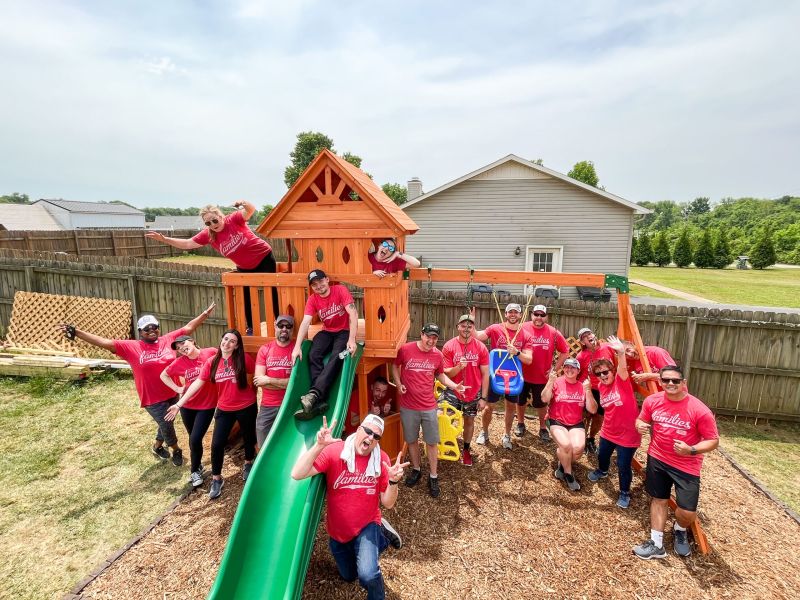Families: Your Story Will Change the World

You have lived the devastation and fear, the burden and the sorrow of fighting pediatric cancer with your child. You have also seen the resilient hope that perseveres through the homemade meal from a neighbor, the texts of encouragement from friends, the bright smiles of nurses in the trenches of the clinic, and maybe even through a hospital team member who handed you that big blue Roc Solid Ready Bag on the worst day of your life, or through a community who rallied in your backyard to build a playset for your family and give your kiddo a safe place to play.
Now, you have a story to tell that will truly change the world for every family who will fight pediatric cancer after you. We want to help you tell that story.
No matter how much of your story you feel comfortable sharing, your perspective of what your family went through will inspire people to want to bring hope to more families who will face the same experiences. Do not feel any pressure to disclose emotion or details that you are not completely comfortable sharing… that is not the goal here. We want to help give you a platform and a guide through which to share as much of your experience as you want to share.
Here are some ideas and structures we hope will be helpful for you as you begin to share your story.
Be honest and authentic
No one knows your story like you do. Share your story as you experienced it… not what you may think people want to hear. It’s okay to talk about your emotions, fears and challenges. Your genuine feelings will resonate with others and give them a more clear understanding of what it actually means to fight pediatric cancer.
Choose the right tone
The tone of your story can adapt to accommodate what you are comfortable sharing. It can be personal and emotional or more informative and educational—both forms of storytelling will impact people and inspire them to help.
Decide where you want your story to begin
You may want to begin telling your story on the day you were diagnosed, or perhaps you’d like to start with what your family looked like pre-diagnosis, or maybe you want to start by sharing where your family is in your fight now. There is no right or wrong place to start telling your story.
Make a storyline
This may send you back to high school English class but that’s ok! If you are unsure where to begin telling your story or even how much of your story you want to tell, start by making a simple framework. Write down specific events or emotions that you want to share as bullet points. Once you have a good idea of the things you want to touch on, shuffle them around to decide the order you want to share them in. You may want to share your story chronologically, or maybe through a series of emotions you walked through, or maybe just through a list of things that helped your family during your fight.
Show and tell
Once you have the text of your story laid out and ready to go, consider pairing pictures with your story to show your community what your fight looked like. Gather photos and videos of your kiddo and post them alongside your story.
We think it is extremely brave and radically powerful that you want to share your story with the world. You have the ability to inspire people to get involved at Roc Solid and donate generously toward creating more of those moments of hope that you experienced. Thank you for choosing to share your story and help propel our mission to one day reach every child and family fighting pediatric cancer with the message of hope and community.
If there is anything else we can do to support your family and help you tell your story, please let us know. Email us at info@rocsolidfoundation.org anytime.
Never forget—you have a story to tell that will change the world.





